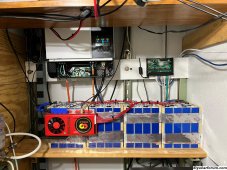Overlooking the fact that grade B cells are more of a crapshoot (so it’s not an apples-to-apples comparison, the idea that you can build a DIY battery for under is a pipedream.
Even if I take your European 280Ah cells for 65 Euro as all-in price including shipping (which you did not state), that $74.52/896Wh or $0.083 /Wh.
Your $50 cell from China almost certainly does not include shipping, and even those cells alone (in quantity of 32 / 28.672kWh) cost $0.056/Wh.
Total up BMS, cables, housing and shipping and I’m pretty sure you’ll be over $0.014/Wh ($200.7 for a 14.336kWh 48V battery).
There is no question that having special requirements such as selecting components, repairability, extended temperature range, high current, etc… easily justifies DIY.
As does doing DIY just for the love of it (a hobby).
The future for those classes of DIYers does not look bleak at all (and in fact looks very bright).
The thread is directed at the majority of DIYers who build DIY because they believe it is much cheaper than buying OTS (~50% according to you and
@midwestsolarnoob).
It’s for that vast class of penny-pinching LiFePO4 DIYers (historically) who do so primarily because of the savings that the future look bleak.
And I am not claiming that DIY is more expensive than OTS today.
I am merely pointing out that since I started the thread 2 years ago, the cost gap between OTS and DIY has been steadily shrinking and that irrefutable trend is almost certain to continue.
So even if there are still savings to be had by going DIY today, there will be less savings by going DIY a year from now and eventually DIY will be at parity and then more costly than OTS.
This exchange with you and
@midwestsolarnoob has made me ready to claim that you cannot build a DIY battery for <50% of the lowest cost/Wh OTS offerings you can find on Amazon today (both including shipping).



